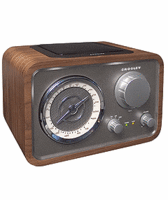Cryptpgraphy: FDR goes balistic wiht The Chicago Tribune and CMDR. Rochefort, deocder extrodianiare
Hey New York, you knuckleheads are the American Version of Aljazeera! Don't you know any history? Here's a little Primer!
Admiral Yamamoto was killed due to the US Breaking Purple or the "Unbreakable Jap Code" by Naval Code Breaker Rochefort.
- The Japanese had hoped to surprise the American military on Midway Island and claim this crucial location. However, American Navy cryptologists stationed in Hawaii had made some breaks into the Japanese Navy Fleet Code, known to cryptanalysts as JN-25B. Although they were breaking less than 15% of JN-25, CDR Rochefort, the Officer-In-Charge of the cryptanalysts, came to believe that the Japanese were planning to attack a target codenamed AF. Rochefort believed AF referred to Midway. With the approval of RADM Nimitz, instructions were given to the Marines on Midway to send a plaintext message complaining about the lack of fresh water. Two days later, 12 May 1942, a JN-25 message was decoded stating: AF is short of water.
Knowing Midway would be attacked, the U.S. Navy and Marines were able to adjust their forces and combat the attack head on. Although the battle raged for portions of three days, and significant numbers of U.S. and Japanese lives were lost, the Americans defeated the Japanese fleet. The U.S. lost 307 men, one carrier (the Yorktown,) one destroyer, and 147 aircraft. The Japanese lost 2,500 men, four carriers, one heavy cruiser, and 332 aircraft.
Rochefort designed a ruse to found out the Imperial Navy was headed for Midway asnd sent out a message that the US was low on Water
From Espionageinfo.com
Perhaps the most dramatic success that resulted from breaking the Japanese naval code was the Battle of Midway in June 1942. The plan of Japanese commander Admiral Isoroku Yamamoto was to assemble an aircraft carrier task force, launch a diversionary raid off the Aleutian Islands, and lure the U.S. Navy to Midway Island and into a decisive battle that would destroy what remained of the American fleet after Pearl Harbor. From decrypted messages, U.S. naval commanders knew the general outlines of the plan, even the timetable. The messages, however, did not say where the Japanese intended to strike; the target was simply designated "AF." It was Rochefort who proposed a ruse to determine what AF stood for. Suspecting that it was Midway Island, he arranged for American forces on the island to send out a radio message saying that they were running short of fresh water. Rochefort and his group waited anxiously to see if Japan would take the bait. Finally, codebreakers intercepted a Japanese message: AF was running short of fresh water. Knowing that the assault was to come at Midway, the U.S. Navy was ready. On June 4, 1942, after a fierce three-day battle, U.S. pilots sank all four Japanese aircraft carriers in Yamamoto's task force, effectively turning the tide in the Pacific. Later, in an unintended breach of wartime security, the Chicago Tribune published a story revealing that the navy had known about Japanese intentions in advance, in effect revealing that JN25 had been broken. The Japanese never found out about the article.
In a postscript to the Battle of Midway, Admiral Yamamoto lost his life as a result of a decrypted message. Codebreakers learned that the admiral was scheduled to inspect a naval base on Bougainville in the Solomon Islands on April 18, 1943. Some U.S. policy makers were hesitant to use this information for fear that doing so would tip off the Japanese that their codes had been broken. Nevertheless, the decision was made to assassinate Yamamoto. That morning, eighteen P38 fighters left their base at Guadalcanal at the other end of the Solomon chain and arrived at Bougainville just as Yamamoto's plane was making its approach. The admiral was killed in the attack, depriving Japan of its most experienced and accomplished admiral and sapping Japanese morale. To maintain the fiction that the fighters had arrived by chance, the air force flew other patrols in the area, both before and after the attack. The Japanese did not change JN25, and for the remainder of the war, U.S. intelligence intercepted and read thousands of Japanese messages.
__________________________________________________
Do You Yahoo!?
Tired of spam? Yahoo! Mail has the best spam protection around
http://mail.yahoo.com




0 Comments:
Post a Comment
<< Home